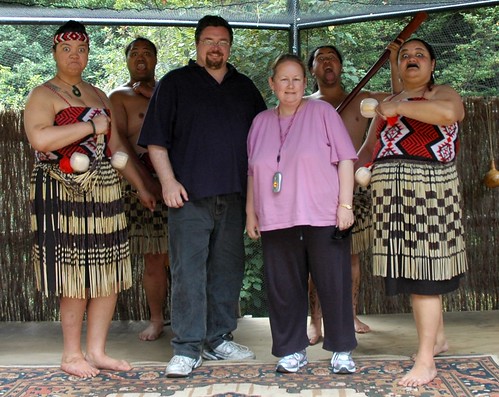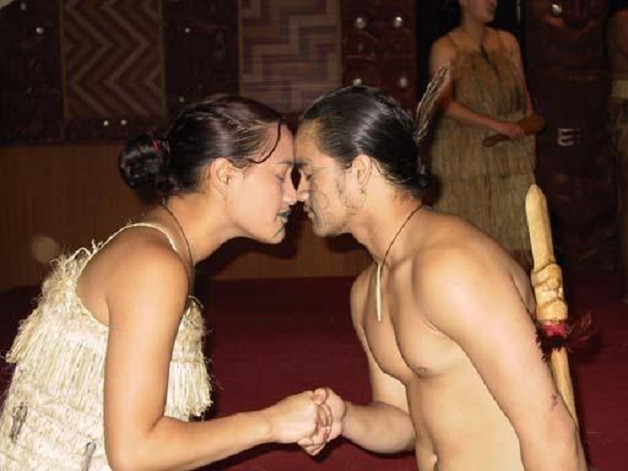"New Zealand’s unique attire often intrigues tourists"
April 18 Visitors to New Zealand can expect to see a variety of clothing styles, although there is one colour that features prominently. Eva Maria, 21, a Commonwealth Correspondent originally born in Russia and now living in the Pacific nation, offers this guide for fashion-spotters.
Visitors to New Zealand can expect to see a variety of clothing styles, although there is one colour that features prominently. Eva Maria, 21, a Commonwealth Correspondent originally born in Russia and now living in the Pacific nation, offers this guide for fashion-spotters.
Dress sense can depict what someone does for a living, where they hang out, and their interests and occupation.
New Zealand’s unique attire often intrigues tourists.
The colour black, for example, will be heavily incorporated in most wardrobes, which is highly unusual compared to the rest of the world.
Perhaps it is the lack of colour available to buy in local stores. Or maybe it is a subconscious loyalty to the ‘All Blacks’ rugby team.
In any case, it is plain to see that there are a number of dress styles common to the country. Here is a rundown of the typical clothing styles you are likely to encounter:
Traditional Maori Costume
The traditional Maori costume is often depicted as males with a moko (a family face tattoo, which depicts the tribe they are from), sometimes a cloak and flax skirt (a plant commonly seen around New Zealand). The females are usually seen wearing tops woven from wool, in the traditional black, red and white patterns, and flax skirts. All this wouldn’t be possible without the greenstone necklace too – a piece of the Earth.
 The Casual New Zealander
The Casual New Zealander
The Casual New Zealander dress style incorporates black into almost every outfit. Kiwis (New Zealanders) need to dress warm due to a rather cold climate outside of the summer season, thus clothing brands such as the New Zealand Icebreaker, which has made its way into international markets, have a large customer base here with their warm jackets and woollen clothing for all ages.
The Hipster/Indie Kid
These are the ‘cool kids’ of the country. School-age kids and those under 25 can be recognized by their own sub-culture style of dress – e.g. the hipsters, gangsters, emos (a misunderstood and out-of-fashion stereotype, but it still rings true when you come across them), and the designer second-hand shop buyers. The typical outfit would consist of odd colours and shapes of clothing, and something really quirky (like a handbag that looks like a shoe!). You cannot quite describe the full style, because everyone has their own variation of it, but if you see something that’s been put together in an interesting way, it’s probably an Indie Kid (P.S. I love them!).
The Suit
We also have what we call ‘the suits’ who represent the corporates, consultants and local government workers. Self-explanatory.
The Farmer
The good old farmer, with the hat and warm jackets, ready to dig into a day’s work on the farm. Woollen socks, gumboots, long (usually dark green) water-proof jacket, fishing hat, jeans and braces (the ones you wear instead of a belt), and a warm jumper.
The Student
There are many types of people around the cities in New Zealand, and many include students who have a style that is similar to ‘the hipster’, but almost always accompanied by large bags to accommodate their laptop and textbooks.
So, do you have these dress styles in your country? What are the similarities, and what are the differences that you can see?
Photo credit: Picture by Peter Harrison (Creative Commons license)
…………………………………………………………………………………………………………………
About me:
“I am a family coach, international speaker, social media expert and author of the bestselling parenting book ‘You Shut Up!’ Though Russian-born, I currently live in New Zealand, and today work with various groups, businesses and families.
“I am on a full-on mission to help improve 10,000,000 adult-youth relationships around the world.”
…………………………………………………………………………………………………………………
Opinions expressed in this article are those of the author and do not necessarily represent the views of the Commonwealth Youth Programme. Articles are published in a spirit of dialogue, respect and understanding. If you disagree, why not submit a response?
To learn more about becoming a Commonwealth Correspondent please visit: http://www.yourcommonwealth.org/submit-articles/commonwealthcorrespondents/
…………………………………………………………………………………………………………………




